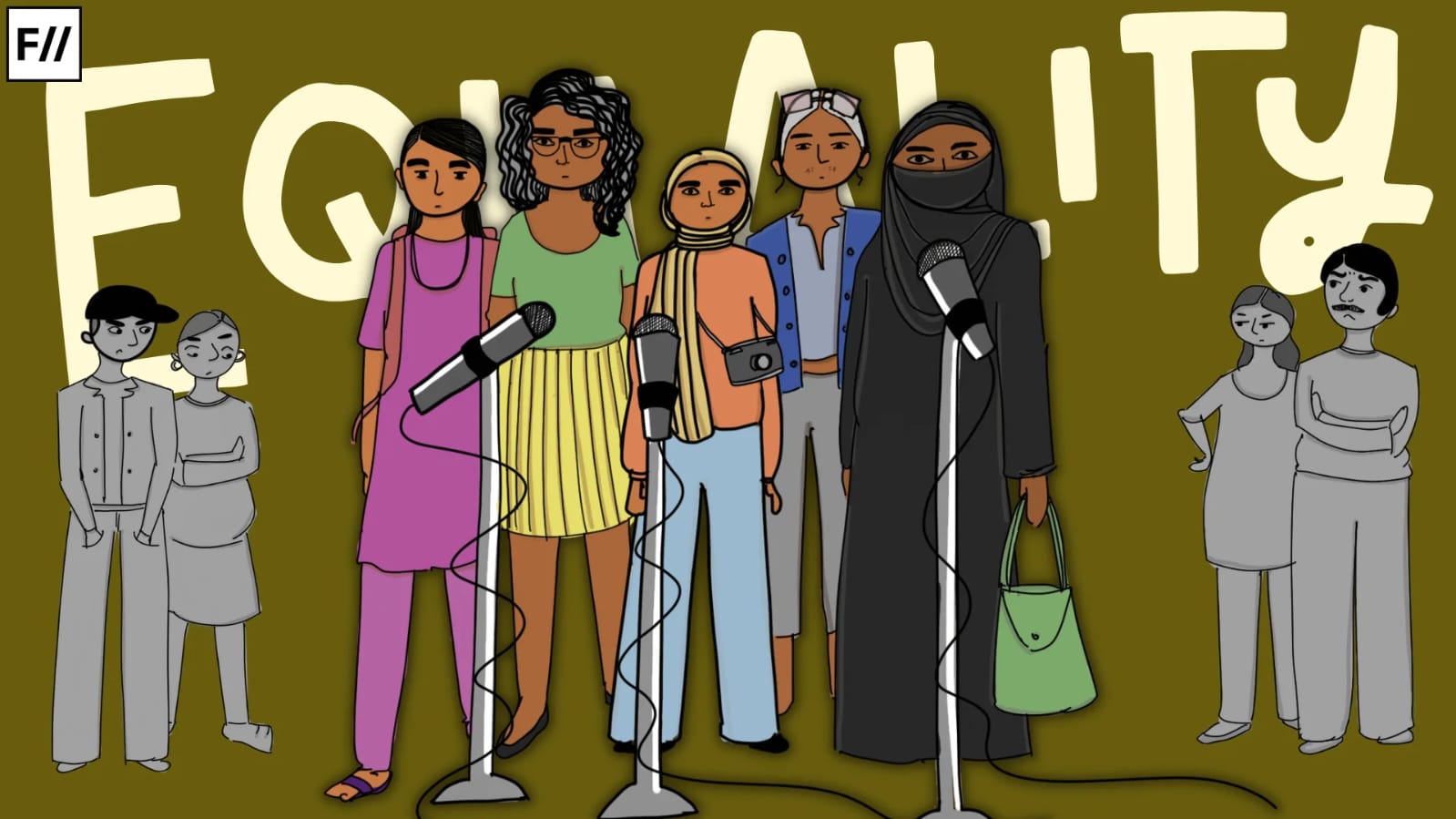The establishment of a surveillance regime is increasingly being posited by the state as the only solution to combat crime and ensure the safety of women and girls. This idea often finds popular support, with the general assumption being that more surveillance equals more safety. However, state surveillance is prone to exploitation, especially in the hands of authoritarian regimes. As states across India usher in various forms of surveillance, Haryana is now set to surveil arrestees to bust networks facilitating sex-selective abortions.
Haryana will use the phone records and location information of those arrested for sex-selective foeticide to dismantle such networks that enable the practice. The decision was arrived at by a task force for improving the sex ratio. The state will use a ‘reverse tracking’ mechanism, wherein every termination of pregnancy sought beyond the 12-week mark will be scrutinised, especially if the women seeking them already have one or more daughters. As part of the effort, every district will carry out ten raids weekly, targeting illegal and unsafe abortion clinics and unauthorised healthcare providers.
Putting sex ratio data into context
Data collected during the 2011 census shows that Haryana had the worst sex ratio at birth (SRB) of any Indian state, putting it considerably below the national average of 906. However, as of May 2025, the state government’s numbers put the SRB at 906 for Haryana. While no corresponding national data is available for this period, the National Family Health Survey (NFHS-5) data for 2019-2021 puts the national average at 929 (for children born in the preceding 5-year period).*
Deeply entrenched patriarchy and son preference intersecting with a plethora of other socio-economic factors lead to sex-selection being so widespread in the state of Haryana.
However, even in considering Haryana’s data alone, the situation is grim. The SRB for the corresponding period in 2024 was 6 points higher at 912. 2024’s annual SRB was the lowest recorded in the state since 2016. This declining trend is what led to the formation of the task force in the first place. And whatever little gains the state has made over the years are not even across districts. Six districts saw worsening SRB in relation to 2024 estimates, with the range of decline in a year varying from 18-35 points.
Deeply entrenched patriarchy and son preference intersecting with a plethora of other socio-economic factors lead to sex-selection being so widespread in the state. Surveillance, then, is an overly simplistic solution for a complex, multi-layered social problem. It also seeks to remedy an issue without ever addressing its root causes.
The ineffectiveness and dangers of surveillance
All surveillance is positioned to be in the pursuance of good, at least on paper. However, in the hands of authoritarian regimes and in the absence of appropriate policy, robust legislative fail-safes, and appropriate frameworks to ensure the privacy of individuals, surveillance poses grave dangers for individual liberties by legally allowing for state intrusion without transparency or restraint.
For surveillance to find popular support, they are often positioned as measures to safeguard women and children or address crime. Uttar Pradesh, for instance, justified the use of facial recognition technology by claiming it would pre-empt crimes against women. Uttarakhand’s Uniform Civil Code, which enabled invasive state meddling in civil matters and severely curtailed women’s autonomy, was positioned as legislation aimed at safeguarding women and their interests.
In the case of Haryana, similar concerns are evident. The state is going to implement a system of ‘reverse tracking’ of all pregnancy terminations beyond 12 weeks of gestation, with greater scrutiny on terminations sought by women who already have one or more daughters. This leaves many questions yet unanswered, legal and policy loopholes through which the state could easily abuse its power.
There is no transparency regarding how the state intends to process, store, and dispose of the data it accesses. While the initiative seeks to access the call records and location information of arrestees, there are no safeguards in place to ensure that the state doesn’t cast a wider net and access any other type of data. The state also doesn’t explain the need for such invasive surveillance in the first place, and why it cannot utilise traditional methods of investigation and questioning. There are also no judicial checks in place, like necessitating the obtaining of a warrant and or at least establishing probable cause before breaching the health privacy of individuals.
There is no transparency regarding how the state intends to process, store, and dispose of the data it accesses. While the initiative seeks to access the call records and location information of arrestees, there are no safeguards in place to ensure that the state doesn’t cast a wider net and access any other type of data.
The state intends to look into every termination carried out after the 12-week mark to determine whether sex-selection played a role in the decision to terminate the pregnancy. It is not looking into people it has a reason to believe might have engaged in the practice; it is looking at everyone seeking abortion care. This in itself is a form of surveillance and a glaring breach of the right to health privacy.
Furthermore, in a country where abortion is heavily stigmatised and women are often denied the right to make their own reproductive decisions, scrutinising every abortion would mean diluting the cover of privacy that is essential for women to be able to seek abortions. Those who face the most stigma when accessing abortions, such as young and unmarried women, will disproportionately shoulder the brunt of such state intrusion.
Posturing without substance
Beyond the surveillance considerations and the dilution of abortion rights and health privacy, the move also lacks any substance. It targets the practice of sex-selection without addressing its causes. Another novel initiative of the government is to have transgender persons celebrate the birth of girl children. All this is gender justice theatre; it gets away with doing little to nothing by banking on the popular approval of its novelty.
To address Haryana’s poor record with sex-selection, it is necessary to understand what makes the state more vulnerable. Apart from social causes like institutionalised patriarchy and gender inequality, which are widely understood to contribute to sex-selection, economic considerations are worth exploring as well.
Surveillance cannot prevent sex-selection because it doesn’t address or mitigate the cause that leads to them in the first place.
Haryana’s economy is primarily agrarian, and this is key to understanding its poor sex ratio and son-preference. While Indian women make up a larger portion of the country’s agricultural workforce and produce the majority of the country’s food, there are two important considerations here. First, traditionally women marry and leave their maternal homes. Families with only daughters and not enough resources to hire workers then face roadblocks in how to manage their farming activities as the parents get older. Second, women’s role in agriculture is often invisibilised, and their labour is undervalued. Despite the numbers and facts, social perception still views agriculture as a largely male activity.
Neighbouring Punjab, which is also a primarily agrarian economy, has a very poor sex ratio as well, hovering just above Haryana’s in the 2011 census. There is some evidence to support this connection between agrarian economies and poor sex ratios. This paper found that societies in China and India that traditionally engaged in plough-based agricultural activities, which were extremely physically demanding, began to value boys over girls, and this historical preference greatly affects sex ratios to this day. The paper also found that such societies had higher instances of sex-selection, infanticide, and mortality among girls today.
Gender justice without surveillance
Surveillance cannot prevent sex-selection because it doesn’t address or mitigate the cause that leads to them in the first place. And those who want to get sex-selective terminations will find workarounds to evade surveillance. Further, without comprehensive solutions, the associated issues of infanticide and higher rates of mortality among girls cannot be addressed. Only addressing the sex ratio at birth doesn’t do enough to remedy issues stemming from gender inequality and son-preference that women and girls face.
To begin with, the patriarchy that underlies son preference must be addressed, and gaps in gender equality must be closed. This can be done by way of community counselling and awareness campaigns, and improving educational and economic outcomes for women with state intervention.
Further, giving monetary incentives to parents for every live birth of a daughter, providing free education, and introducing further policies to better meet the nutritional needs of poor families, especially the women and girls of these families, are also essential because they ensure that people don’t resort to sex selection due to financial constraints. Increasing efforts to curb the practice of dowry will also go a long way because the economic costs of dowry demands also lead to son preference.
Finally, free healthcare, pension schemes, and improved social and state infrastructure to address the needs of the elderly are crucial. Son preference is also borne of the idea that sons will take care of ageing parents, whereas daughters who are married into another home cannot. In the absence of adequate economic resources and support systems, this is the only option many have to ensure survival and dignity in old age.
Haryana already has some of these measures in place. Upon the birth of a second or third girl child (first in the case of SC/ST/BPL families), the state invests INR 21,000 with the LIC in the name of the child. Women who already have one daughter are counselled against sex-selection, and ASHA workers are assigned to women who have two or more daughters to mitigate the risk of sex-selection. Continuing these initiatives and addressing gaps is what is needed.
Criminalisation of a practice can reduce it, but not eradicate it. And any form of state surveillance should be rejected at the outset. Ultimately, large-scale and systematic changes in dismantling patriarchal frameworks and bringing about gender parity will see the best results. More well-rounded approaches also ensure that son preference prenatally, in the form of sex-selection, isn’t the only issue being addressed. Son-preference jeopardises social, economic, educational, and nutritional outcomes for women and girls throughout their lives.
*Experts suggest exercising caution when considering these figures from the National Family Health Survey (NFHS-5) because they aren’t as comprehensive as census data. However, the last census was conducted in 2011, but states have continued to update their sex ratio figures, and NFHS findings have been mentioned to put these figures into context.
About the author(s)




